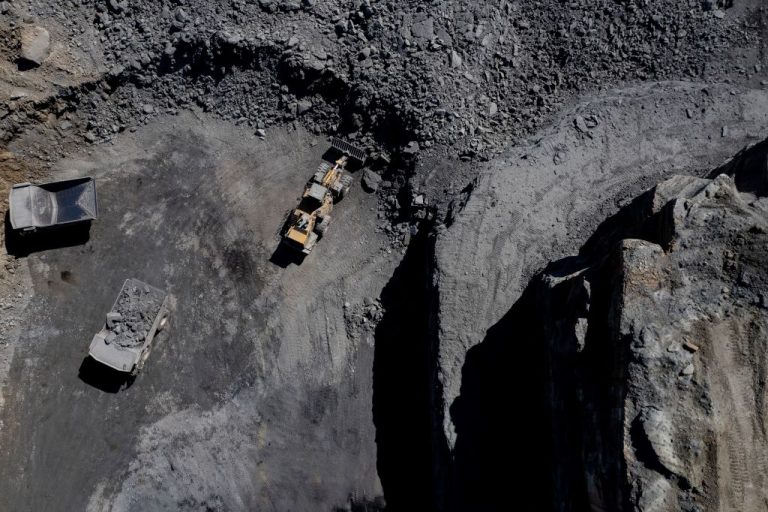On Nov. 1, Kentucky Gov. Andy Beshar issued an emergency order for Martin County, Kentucky after a 10-story coal preparation plant that was in the process of being salvaged, collapsed killing one worker and trapping another.
A number of rescue teams are on site scrambling to save the trapped worker.
“Please pray for the family and loved ones of this individual,” Beshar posted on X, adding in a subsequent post, “Kentucky, keep praying – but the scene is bad and we should be prepared for tough news out of Martin County.”
Daniel Cameron, Kentucky Attorney General, also posted on X, “We are monitoring the news out of Martin County. A coal preparation plant collapsed, and rescue efforts are underway. We ask Kentuckians join us in praying for the two workers who are trapped. We pray for our brave First Responders as they continue rescue operations.”
Local authorities were first dispatched to the scene at around 6:30 p.m. on Tuesday, arriving approximately 10 minutes later only to discover the 10-story coal preparation plant had collapsed, trapping two workers in the rubble, WYMT first reported.
Success
You are now signed up for our newsletter
Success
Check your email to complete sign up
A coal preparation plant is where newly mined coal is washed of soil and rock and crushed into graded sized chunks for transport to market.
Martin County Sheriff, John Kirk, told WYMT, “This coal preparation plant has been out of commission for a while, for several years. It’s my understanding that the coal company sold it for basically scrap, and they were salvaging what they could out of it,” adding that the salvage operation had been ongoing for about eight months.
“They typically take these down in sections. They fall them, you know, cut torch and fall them in section,” Kirk said, adding that, “We believe that’s what happened. That it just didn’t fall the way they had projected it to fall and it actually closed around them.”
Authorities are saying that efforts to free the trapped worker could possibly take days.
According to Fox News, the Pikeville Fire Department was the first to make contact with the trapped worker.
“We’ve been able to locate one of them and talk to him. Rescue efforts are underway now. We have multiple agencies down there. We’ve got several rescuers inside of the rubble trying to free him,” Kirk told Fox News.
“You kind of feel helpless that you can’t do more, that you can’t for it faster, but this is not a fast process. It’s a very slow process in order to try to keep everybody safe. This is a rescue mission,” Kirk said, adding that, “If you pray, pray for these people. Pray for the victims, the families. Pray for the first responders.”
READ MORE:
- ‘What a scam!’: Elon Musk Calls for NewsGuard to Be Disbanded
- ‘Double Ten’: Taiwan and the Republic of China
- ‘This is a public health issue’: NYS Lawmakers Call for a Further Crackdown on Illegal Pot Dispensaries
History of disasters
Martin County has been a major coal producing region for decades, employing tens of thousands of people in the 1980s, however this dropped to under 4,000 by 2017.
The county and state are no strangers to coal plant disasters.
On October 11, 2000, just after midnight, a massive coal slurry spill broke into an abandoned underground mine in the county. An estimated 306 million gallons of the toxic sludge breached the mine’s entrance and found its way into two tributaries of the nearby Tug Fork River.
The toxic slurry contained arsenic and mercury and killed everything in the two tributaries and even oozed into nearby residential neighbourhoods, contaminating the water supply for some 27,000 residents.
The spill was 30 times larger than the Exxon Valdez oil spill and is regarded as one of the worst environmental disasters in the southeastern United States.
In addition, in May, 2006 in Harlan County, Kentucky five miners were killed after an explosion in a coal mine known as the “Darby Mine No. 1 disaster.”
At the time the Courier-Journal reported that an investigator believed trapped methane was to blame for the explosion.
In December 1970, 39 miners lost their lives after an explosion ripped through a Kentucky coal mine that had previously been flagged for multiple safety violations. Ironically, the disaster occurred exactly one year after the passing of the Coal Mine Safety and Health act of 1969.
A month prior to the explosion the Bureau of Mines had declared the mine an “imminent danger” due to blasting safety hazards, but the mine was allowed to continue operating.
The editor of the Courier-Journal, James D. Ausenbaugh, wrote in his memoir, that one of the owners of the mine attended the site of the disaster to complain about the 1969 mine safety law. He was reportedly beaten bloody by a Leslie County judge who was on site. No charges were ever laid.
















